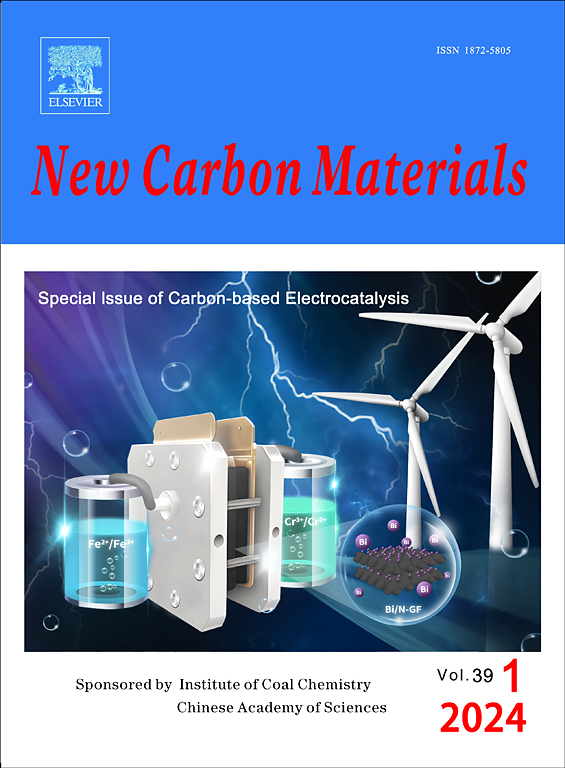Synthesis of pitch-derived carbon anodes for high-performance potassium-ion batteries
IF 5.7
3区 材料科学
Q2 Materials Science
引用次数: 0
Abstract
Potassium-ion batteries (PIBs) hold promise for large-scale energy storage, necessitating the development of high-performance anode materials. Carbons with the advantage of structural versatility, are recognized as the most promising anode materials for their commercialization, however the relationship between the carbon anode structure and its electrochemical performance remains unclear. A series of pitch-based soft carbons with different structures were fabricated using carbonization temperatures in the range 600–1400 °C, and their changes in carbon configuration and K-storage performance as a function of carbonization temperature were investigated. Correlations between the carbon crystal size and the low-potential plateau region capacity and between the degree of structural disorder of the carbons with their sloping region capacity were revealed. Among all samples, that obtained by carbonization at 700 °C had a relatively high degree of disorder and a large interlayer spacing, and had a high reversible capacity of 329.4 mAh g−1 with a high initial coulombic efficiency of 72.81%, and maintained a high capacity of 144.2 mAh g−1 at the current rate of 5 C. These findings improve our fundamental understanding of the K-storage process in carbon anodes, and thus facilitate the advance of PIBs.
高性能钾离子电池用沥青衍生碳阳极的合成
钾离子电池(PIBs)有望实现大规模储能,这就需要开发高性能阳极材料。碳以其结构通用性的优势,被公认为是最有发展前景的阳极材料,但碳阳极结构与其电化学性能之间的关系尚不清楚。在600 ~ 1400℃的炭化温度范围内制备了一系列不同结构的沥青基软碳,研究了其碳构型和储钾性能随炭化温度的变化。揭示了碳晶体尺寸与低电位高原区容量、碳结构无序度与其斜坡区容量之间的相关关系。其中,700℃炭化得到的样品无序程度较高,层间距大,具有329.4 mAh g−1的高可逆容量,初始库仑效率为72.81%,在5℃的电流下保持144.2 mAh g−1的高容量。这些发现提高了我们对碳阳极k存储过程的基本认识,从而促进了PIBs的发展。
本文章由计算机程序翻译,如有差异,请以英文原文为准。
求助全文
约1分钟内获得全文
求助全文
来源期刊

New Carbon Materials
MATERIALS SCIENCE, MULTIDISCIPLINARY-
CiteScore
6.10
自引率
8.80%
发文量
3245
审稿时长
5.5 months
期刊介绍:
New Carbon Materials is a scholarly journal that publishes original research papers focusing on the physics, chemistry, and technology of organic substances that serve as precursors for creating carbonaceous solids with aromatic or tetrahedral bonding. The scope of materials covered by the journal extends from diamond and graphite to a variety of forms including chars, semicokes, mesophase substances, carbons, carbon fibers, carbynes, fullerenes, and carbon nanotubes. The journal's objective is to showcase the latest research findings and advancements in the areas of formation, structure, properties, behaviors, and technological applications of carbon materials. Additionally, the journal includes papers on the secondary production of new carbon and composite materials, such as carbon-carbon composites, derived from the aforementioned carbons. Research papers on organic substances will be considered for publication only if they have a direct relevance to the resulting carbon materials.
 求助内容:
求助内容: 应助结果提醒方式:
应助结果提醒方式:


